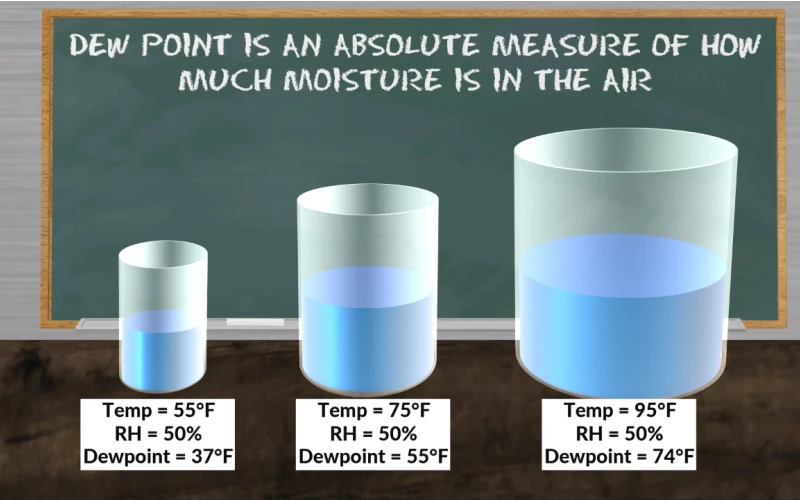
# High Dew Point and Its Impact on Weather Conditions
## Understanding Dew Point
The dew point is the temperature at which air becomes saturated with water vapor, leading to the formation of dew, fog, or clouds. When we talk about a high dew point, we’re referring to conditions where the air contains a significant amount of moisture, making the temperature at which condensation occurs relatively close to the actual air temperature.
## What Constitutes a High Dew Point?
Meteorologists generally consider dew points above 65°F (18°C) to be high, with values above 70°F (21°C) feeling particularly oppressive. When dew points reach this level:
– The air feels heavy and moist
– Sweat evaporates more slowly from the skin
– Breathing may feel more difficult
– Discomfort increases significantly
## Effects on Human Comfort
High dew points have a profound impact on how we perceive temperature. The combination of high temperature and high dew point creates what we commonly refer to as “muggy” or “sticky” weather. This occurs because:
– Our bodies rely on sweat evaporation to cool down
– High moisture content in the air slows this evaporation
– The heat index (apparent temperature) rises significantly above the actual temperature
## Impact on Weather Patterns
High dew point conditions influence various weather phenomena:
### Thunderstorm Development
Moisture-rich air (indicated by high dew points) provides the fuel for intense thunderstorms. When other atmospheric conditions are favorable, high dew points can lead to:
– More frequent thunderstorm activity
– Heavier rainfall rates
– Increased potential for severe weather
### Fog Formation
High dew points, especially when combined with cooling temperatures at night, create ideal conditions for fog development. This is particularly common in:
– River valleys
– Coastal areas
– Low-lying regions
### Tropical Weather Systems
In tropical regions, persistently high dew points contribute to the formation and intensification of:
– Tropical depressions
– Tropical storms
– Hurricanes
## Measuring and Monitoring Dew Point
Modern weather stations routinely measure dew point along with temperature and humidity. Some key points about dew point measurement:
– More accurate than relative humidity for assessing moisture content
– Doesn’t fluctuate as dramatically with temperature changes
– Provides a better indicator of actual moisture in the air
## Health Considerations
Extended periods of high dew points can affect human health in several ways:
– Increased risk of heat-related illnesses
– Aggravation of respiratory conditions
– Higher likelihood of mold growth indoors
– Reduced air quality in urban areas
## Conclusion
Understanding high dew points is crucial for both weather prediction and personal comfort. By monitoring dew point forecasts along with temperature, we can better prepare for uncomfortable conditions and potentially dangerous weather situations. Whether you’re planning outdoor activities or trying to understand severe weather potential, paying attention to dew point values provides valuable insight into atmospheric moisture content and its effects.
Keyword: high dew point